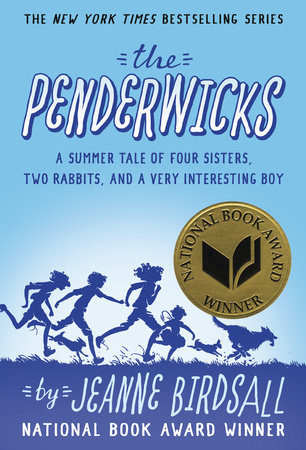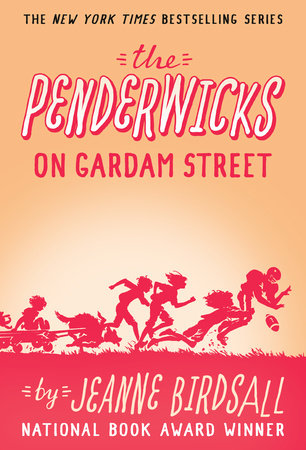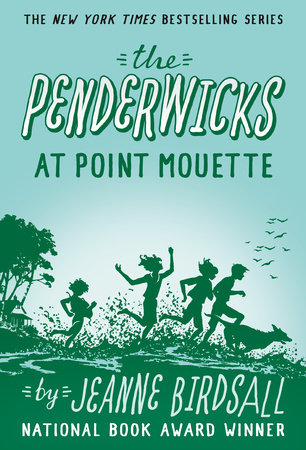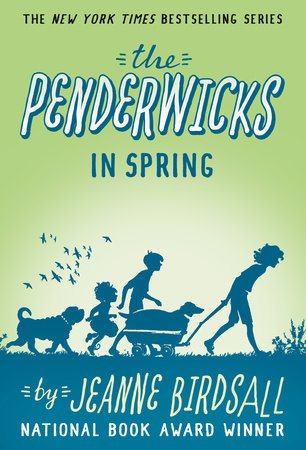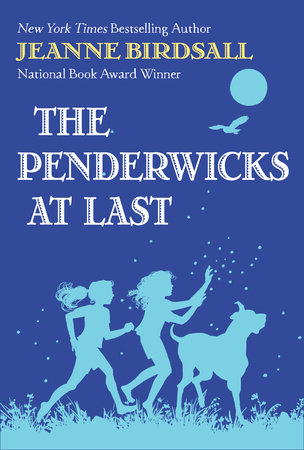Jeanne Birdsall on Penning
The Penderwicks Through the Years
by the Brightly Editors
Jeanne Birdsall is the New York Times-bestselling author of The Penderwicks, a charming middle grade novel that kicks off a beloved series about four sisters and their many adventures together. When the Penderwick family rents a cottage on a sprawling estate for their summer vacation, the sisters become friends with Jeffrey, the boy who lives in the estate’s mansion. When Jeffrey’s mother, Mrs. Tifton, reveals her plan to send him off to military school against his will, the girls stand by their friend and help him find his own voice. We were so excited to chat with Jeanne about the classic tales that inspired her writing, the role photography now plays in her work, and the childhood struggle she shared with Batty, the youngest Penderwick sister.
The Penderwicks is a Brightly Book Club for Kids pick. Click here to discover book-inspired activities and tips for discussion, and join in on the reading fun. (And make sure to scroll down for a chance to enter to win a full set of The Penderwicks series!)
From Rosalind to Batty, each of the sisters is her own unique person. Is there one Penderwick sister to whom you most relate? Which character is most fun to write?
All the sisters have parts of me in them. They have to, or I couldn’t write about them, and I certainly could not write from their point of view. (I like to think that Mrs. Tifton and I have nothing in common, but I wrote her from the outside looking in, which is a different process. If anyone disagrees and thinks that Mrs. T does have bits of me in her, please keep it to yourself.)
That said, I have Skye’s temper and her tendency to rush to judgment, but I’m closest to Batty, and Jane was most fun to write. It helped that Jane happens to share many of my attitudes toward reading, writing, and boyfriends.
Before writing The Penderwicks, you were a noted portrait photographer. What inspired you to make the jump from visual art to the written word? Did your skill in portraiture help you to capture the personalities of the Penderwick sisters on the page?
Caveat: “Noted” portrait photographer is a huge stretch.
The transition from photography to writing was more of a glide than a jump. I kept doing both until the Penderwicks were doing well enough to justify shutting down my darkroom. It was time for me to leave photography, anyway. My best work was behind me, and I had no exciting new ideas.
In the last several years, digital photography has allowed me to go back to making pictures without being in the dark, breathing noxious fumes. So now I’m doing it for fun, and without the anxiety over who will pay for what.
Photographing a person is very different from writing about her. In a novel, you have a few hundred pages in which to build a character, using her actions, her thoughts, and how other people feel about her. With photography, you have only a portion of a second, and you end up with only the visual.
I do use photography, though, to help me research locations, and then to remember what they look like after I go back home. This is as hedonistic as it is practical — I send characters where I want to go myself. Here, for example, is a photograph from Ocean Point, Maine, which helped me dream up the setting for The Penderwicks at Point Mouette. (The book I’m working on now, my first post-Penderwicks novel, gave me the excuse to visit Scotland last year!)

The settings of your books feel like characters themselves, particularly Arundel. How have you chosen and developed these settings?
I grew up across the street from the remnant, the ghost, of a large estate. The mansion was still there at the top of the hill, but falling into decay. The grounds had been neglected, overgrown with Pennsylvania maples and firs, brambles and vines, a wild place. Only hints of what had once been could be found — an old well, a half-buried springhouse, a row of tall lilacs, a patch of daffodils. The children of the neighborhood — there were dozens of us — called this place The Woods. Yes, a singularly unimaginative nomenclature, but notice the capital The. For us, this place wasn’t just any old bunch of trees. It was The Woods, the only woods that mattered. And, for me, it held the seeds of Arundel.
When, decades later, I wanted to bring Arundel and its gardens to life, I needed more than a memory — The Woods had long been razed and tidied up into a bland park. I began roaming New England (and Michigan and England itself) with a large-format camera, photographing grand gardens. Each of these gave something to Arundel: a fountain, a statue, a single rosebush, the view from a terrace, all smooshed together into my own fictional paradise.


Though a contemporary story, the Penderwicks series has a timelessness about it and has been compared to classic tales like Little Women. Were you inspired by any enduring classics, either in childhood or adulthood?
My pitch for the first book, if I had known what a pitch was — I was very green — would have been “the Little Women visit the Secret Garden.” Many of the plot points from Little Women played themselves out in my books, some without me noticing. Like Rosalind getting a crush on Cagney in the first book. It took me a while to realize I was echoing Meg March falling for Laurie’s tutor, John. (But, no, I never had any intention of letting Rosalind marry Cagney.) The Penderwick girls themselves are partially in on the joke too. When Jane chops off her hair at Point Mouette, she echoes Jo’s mournful cry about the loss of her “one beauty.”
What has it been like to write the sisters as they grow up?
Not so different from growing up myself or watching the children around me grow up. It seemed a natural process, possibly because I spent so many years writing the books. When the first one was published, it was 2005 and Batty was four. The final one, The Penderwicks at Last, is being published this year, 2018, and Batty is 19. It would have felt peculiar not to let them grow up, I think. And I would have gotten bored.
What, if anything, do you think readers can learn from the Penderwick siblings and their adventures?
If I started to think about readers learning from my books, I’d panic and stop writing altogether. Both because I don’t think of myself as a teacher — my rare visits to elementary school classrooms can be remarkably awkward — and because I read not to learn but to live, briefly enrapt in someone else’s world. This was especially true when I was a child, rereading my favorites over and over, like going back to my favorite flavor of ice cream. Why bother with anything else when mint chocolate chip exists in this world?
If I learned anything from books back then — and I did — that was a plus. But when I was asked what I’d learned or, worse, told to write a book report about it, I’d feel stripped bare, the depths of my soul plundered. Batty’s antipathy for book reports was mine. Even the facts stand: One girl in my fourth grade class — hi, Lindy — really did write an obscene number of book reports, while I barely scraped together the requisite ten.
But I do hope my books make people laugh.
-
Books in The Penderwicks Series:
-
The Penderwicks on Gardam Street
Also available from:The Penderwicks at Point Mouette
Also available from:The Penderwicks in Spring
Also available from:

